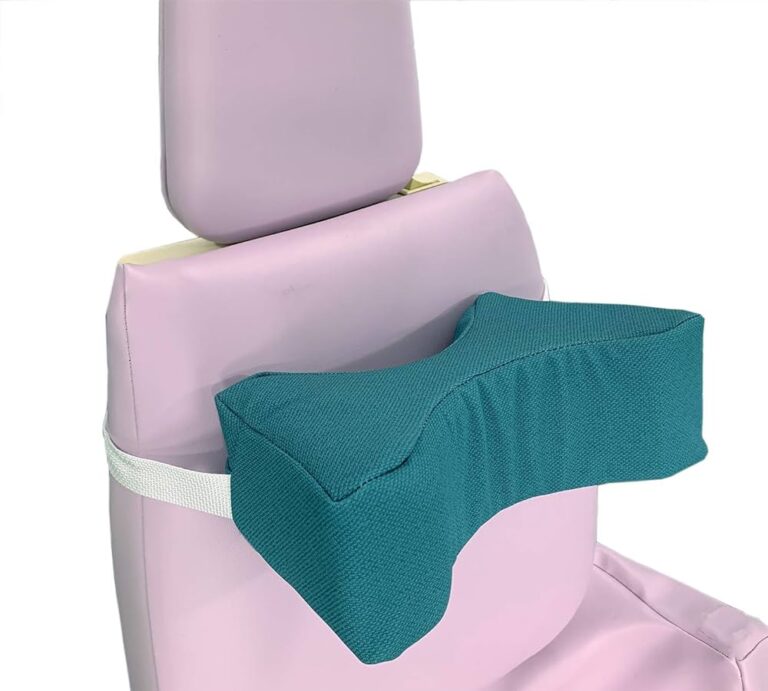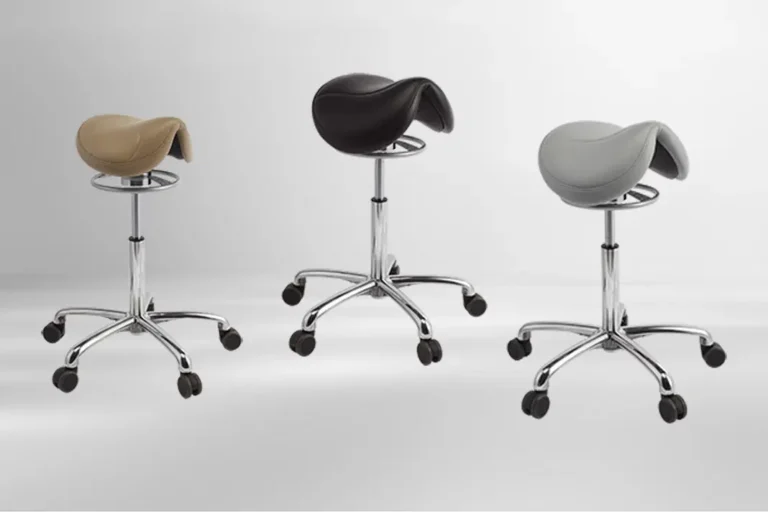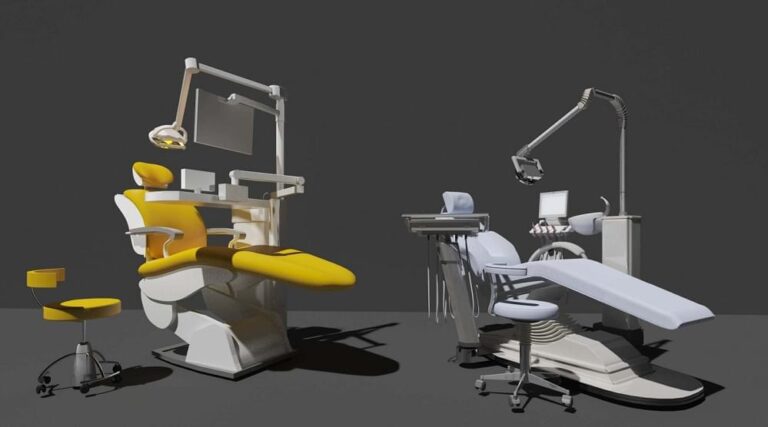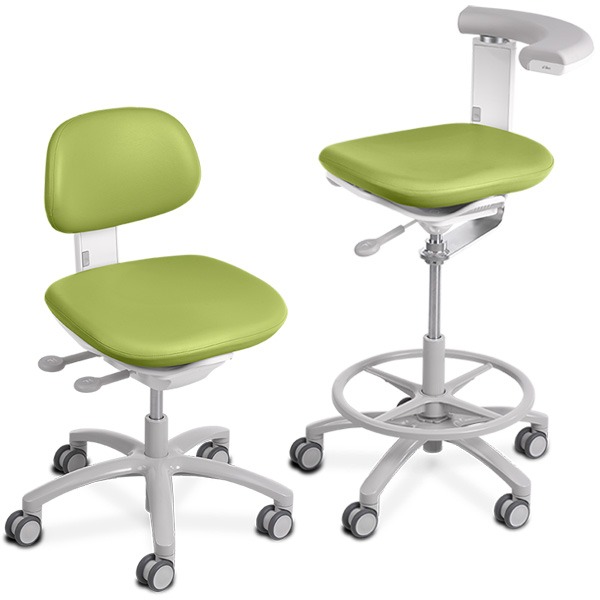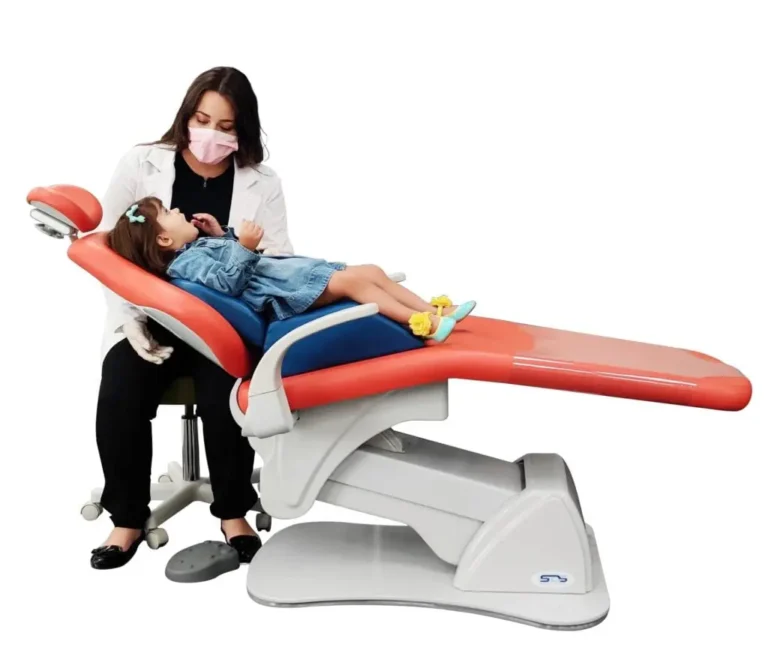Dental assistants play a crucial role in ensuring smooth operations and patient care in any dental practice. One of the most important tools for a dental assistant is their chair. A well-designed, ergonomic dental assistant chair can significantly impact comfort, productivity, and overall well-being. In this comprehensive guide, we’ll explore the essential aspects of dental assistant chairs and help you make an informed decision when choosing the perfect one for your needs.
Why Ergonomics Matter in Dental Assisting
Dental assisting involves long hours of sitting and precise movements, which can take a toll on the body if proper ergonomics are not considered. Poor posture and inadequate support can lead to a range of health issues, including back pain, neck strain, and musculoskeletal disorders. Investing in an ergonomic dental assistant chair is not only beneficial for the assistant’s comfort and well-being but also for the overall efficiency and quality of patient care.
An ergonomic dental assistant chair should provide:
- Proper lumbar support to maintain the natural curvature of the spine
- Adjustable height and backrest to accommodate different body types and preferences
- Comfortable seat cushioning to reduce pressure points and promote circulation
- Armrests to support the shoulders and reduce neck strain
- Smooth swivel and rolling mechanisms for easy movement and access to patients and equipment
By prioritizing ergonomics, dental practices can create a healthier and more productive work environment for their assistants.
Key Features to Consider
When evaluating dental assistant chairs, there are several key features to keep in mind:
- Adjustability: Look for a chair with a wide range of adjustments, including seat height, backrest angle, and armrest position. This allows the assistant to customize the chair to their specific needs and maintain proper posture throughout the day.
- Seat Design: The seat should be contoured and padded to provide optimal support and pressure distribution. Some chairs offer a saddle-style seat, which promotes a more natural, upright posture and reduces strain on the lower back.
- Backrest: An ergonomic backrest should support the natural curve of the spine and be adjustable to fit different body types. Look for chairs with lumbar support and the ability to adjust the backrest angle independently of the seat.
- Armrests: Adjustable armrests are essential for reducing shoulder and neck strain. They should be well-padded and easy to adjust to the desired height and angle.
- Mobility: A dental assistant chair should be easy to move around the operatory. Look for chairs with smooth-rolling casters and a stable base for effortless mobility and positioning.
- Durability and Maintenance: Choose a chair made from high-quality materials that can withstand daily use and frequent cleaning. Removable and replaceable upholstery is a plus for long-term maintenance.
By carefully considering these features, you can select a dental assistant chair that offers the best combination of comfort, support, and functionality for your practice.
Top Brands and Models
Several reputable brands offer high-quality dental assistant chairs designed with ergonomics and durability in mind. Some top brands and models to consider include:
- A-dec 500 Assistant’s Stool: This premium chair features a contoured backrest, adjustable armrests, and a dynamic seating system that promotes healthy posture. The A-dec 500 is known for its exceptional comfort and durability.
- DentalEZ 1601 Assistant’s Stool: The DentalEZ 1601 offers a contoured seat with waterfall edge, adjustable backrest, and optional armrests. Its sturdy construction and easy-to-clean upholstery make it a popular choice among dental practices.
- Midmark Dental Assistant’s Stool: Midmark’s assistant stool features a contoured seat, adjustable backrest, and optional armrests. The chair’s ergonomic design and durable construction ensure long-lasting comfort and reliability.
- Pelton & Crane 1820 Assistant’s Stool: The Pelton & Crane 1820 offers a contoured seat, adjustable backrest, and optional armrests. Its sleek design and high-quality materials make it a stylish and functional choice for any dental operatory.
- Brewer 135DSS Assistant’s Stool: Brewer’s 135DSS features a saddle-style seat, adjustable backrest, and optional armrests. The saddle seat design promotes a healthy, upright posture and reduces pressure on the lower back.
When selecting a brand and model, consider your specific needs, budget, and the overall aesthetics of your dental practice. Many manufacturers offer customization options, such as color choices and additional features, to help you create the perfect dental assistant chair for your team.
Proper Positioning and Posture
In addition to choosing the right dental assistant chair, it’s crucial to educate your team on proper positioning and posture to maximize the benefits of an ergonomic setup. Here are some key guidelines:
- Adjust the chair height so that the assistant’s feet are flat on the floor, and their knees are at a 90-degree angle. This helps maintain proper circulation and reduces strain on the lower back.
- Position the backrest to support the natural curve of the spine, particularly in the lumbar region. The backrest should be adjusted to maintain a slight forward lean, promoting an upright posture.
- Adjust armrests so that the assistant’s shoulders are relaxed, and their elbows are at a 90-degree angle. This reduces strain on the neck and shoulders and allows for precise movements.
- Maintain a neutral wrist position when working with instruments and equipment. Avoid excessive bending or twisting of the wrists, as this can lead to strain and repetitive stress injuries.
- Take frequent breaks to stretch and move around. Encouraging your team to take short breaks throughout the day can help reduce muscle fatigue and promote overall well-being.
By combining a well-designed dental assistant chair with proper positioning and posture, you can create a comfortable and efficient work environment that supports the long-term health and productivity of your team.
Maintenance and Longevity
Investing in a high-quality dental assistant chair is just the first step. To ensure your chair remains in top condition and provides lasting comfort, regular maintenance is essential. Here are some tips for maintaining your dental assistant chair:
- Clean and disinfect the chair regularly, following the manufacturer’s guidelines for approved cleaning agents. Pay extra attention to high-touch areas, such as armrests and seat cushions.
- Inspect the chair periodically for signs of wear and tear, such as cracks in the upholstery or loose bolts. Address any issues promptly to prevent further damage and ensure the chair remains safe and functional.
- Lubricate moving parts, such as casters and adjustment mechanisms, as needed to maintain smooth operation and prevent premature wear.
- Replace worn or damaged components, such as seat cushions or armrest pads, as necessary. Many manufacturers offer replacement parts to help extend the life of your dental assistant chair.
By following these maintenance tips and choosing a chair from a reputable brand known for durability, you can ensure that your investment in a high-quality dental assistant chair pays off in the long run.
Conclusion
Selecting the perfect dental assistant chair is a critical decision that can significantly impact the comfort, productivity, and well-being of your dental team. By prioritizing ergonomics, considering key features, and choosing a reputable brand, you can invest in a chair that provides lasting support and comfort.
Remember to educate your team on proper positioning and posture, and maintain your chair regularly to ensure its longevity. With the right dental assistant chair and a focus on ergonomics, you can create a healthier, more efficient work environment that benefits both your team and your patients.
How often should I replace my dental assistant chair?
The lifespan of a dental assistant chair depends on factors such as usage, maintenance, and quality of construction. On average, a well-maintained chair from a reputable brand can last 5-10 years or more. However, if you notice significant wear or damage, or if your team reports discomfort, it may be time to consider a replacement.
Can I customize my dental assistant chair?
Many manufacturers offer customization options for dental assistant chairs, such as color choices, upholstery materials, and additional features like foot rings or armrest styles. Check with your chosen brand to see what customization options are available to suit your practice’s needs and aesthetic preferences.
Are saddle-style seats better for ergonomics?
Saddle-style seats can promote a more upright, natural posture and reduce pressure on the lower back. However, the best seat style for an individual depends on factors such as personal preference, body type, and specific job requirements. It’s essential to try different seat styles and choose the one that provides the most comfort and support for your team.
How can I ensure my dental assistant chair is properly adjusted?
Provide training for your team on how to adjust their chairs properly, focusing on key areas such as seat height, backrest angle, and armrest position. Encourage team members to take the time to fine-tune their chair settings and make adjustments throughout the day as needed to maintain proper posture and comfort.
What should I do if my dental assistant chair starts to show signs of wear?
If you notice signs of wear, such as cracks in the upholstery or loose components, first consult the manufacturer’s guidelines for maintenance and repair. Many brands offer replacement parts and repair services to help extend the life of your chair. If the damage is extensive or the chair is no longer comfortable or safe, it may be time to consider investing in a new one.

